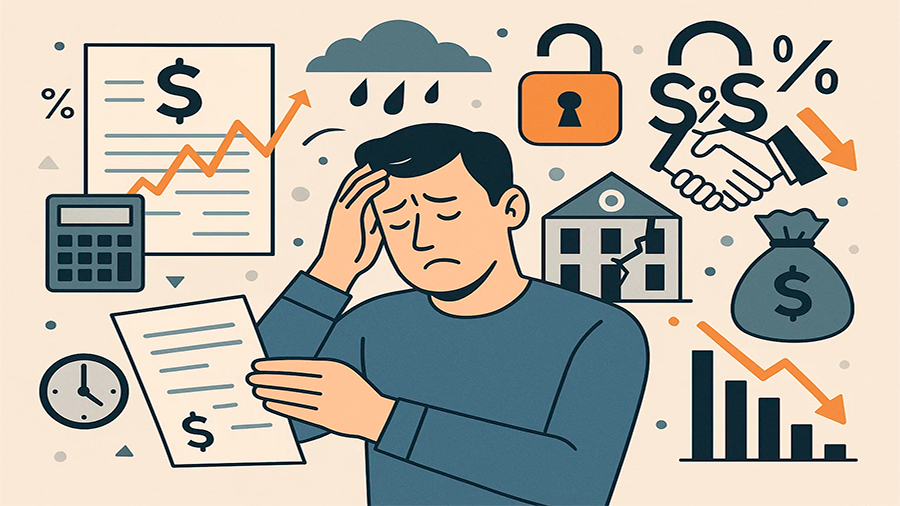How To Calculate The Return On A Loan Before Raising Funds
Securing financing for business growth requires not just confidence but precise calculations. Before applying for credit, you need to evaluate whether the borrowed capital will actually generate a positive outcome. Understanding how to calculate the return on a loan before raising funds helps you avoid hidden risks, measure profitability accurately, and forecast repayment capacity with clarity. By assessing cost, revenue potential, interest impact, and operational margins, you can see if the loan adds value or becomes a burden. This process ensures informed decisions and protects your long-term financial stability.
Why Calculating The Return On A Loan Matters
Every business loan carries both opportunities and obligations. Evaluating the return on a loan before raising funds is essential because repayment schedules, interest costs, and hidden charges can erode expected profit. Lenders require guarantees, but you need proof that borrowed capital will support expansion without draining liquidity. By running calculations, you identify if debt strengthens or weakens financial structure. Studies show that over 45% of small businesses underestimate the total cost of debt due to overlooked fees. Knowing this, you must create models that measure cash inflows against repayment obligations. Accurate projections transform borrowing from a gamble into a structured strategy. When you calculate, you are not guessing; you are managing risk with precision and ensuring that growth stays sustainable rather than fragile.
Core Components Of Loan Return Calculations
Breaking down loan return analysis involves more than checking the interest rate. To calculate the return on a loan before raising funds, you must consider total repayment, net profit, time horizon, and opportunity cost. Each component gives a clearer picture of whether the borrowed money truly works in your favor. If any piece is neglected, projections can mislead and decisions may become costly. By combining multiple elements, you create a complete framework that reflects real financial impact.
Total Loan Cost
Total loan cost includes principal, interest, origination fees, and service charges. Many entrepreneurs focus solely on nominal interest, ignoring extras that can raise the actual annual percentage rate significantly. For example, a 7% rate may increase to 9% once fees are added. Calculating the true effective rate prevents underestimating obligations and reveals whether the project can absorb repayment without stress.
Expected Revenue Impact
Borrowed funds should generate measurable income. Estimating incremental revenue helps determine whether loan returns exceed costs. If you invest $100,000 and expect an additional $150,000 in revenue within a year, the projected return is $50,000 before expenses. Subtracting loan costs shows the net benefit. Without this step, you risk overleveraging for projects with weak earning potential.

Time Value Of Money
Delays in revenue generation reduce loan effectiveness. Discounted cash flow analysis accounts for the fact that money earned in the future is worth less than money today. If returns take years, you must discount them to see true value. Ignoring this factor leads to overestimation of benefits and underestimation of risks tied to long repayment terms.
Methods For Calculating The Return On A Loan
Several methods allow you to calculate the return on a loan before raising funds. Each approach highlights different aspects of debt impact and ensures that you measure profitability from multiple angles. Using more than one model gives you a stronger defense against miscalculations. By applying practical financial tools, you uncover both risks and rewards embedded in borrowing decisions.
Return On Investment (ROI)
ROI measures the percentage gain relative to borrowed capital. The formula is simple: Net Profit / Loan Amount × 100. If you borrow $50,000 and generate $65,000 after covering costs, your ROI is 30%. This method shows efficiency quickly but does not capture repayment timing or compounding interest. Still, it provides a clear first indicator of profitability.
Internal Rate Of Return (IRR)
IRR evaluates the discount rate that makes net present value of future cash flows equal to zero. If IRR exceeds loan interest, the investment is worthwhile. For instance, if a project financed with debt yields 12% IRR while loan costs 8%, the margin is favorable. This method helps compare multiple investment opportunities with different timelines.
Payback Period
Payback period shows how long it takes for loan-funded investments to repay themselves. A shorter payback period means lower risk. If borrowed funds return within 18 months while repayment term is five years, you gain a safety cushion. However, focusing only on payback ignores long-term profitability, so it should be combined with ROI or IRR.
Practical Example Of Loan Return Analysis
Numbers illustrate concepts better than formulas alone. Suppose you consider borrowing $200,000 at 8% annual interest for five years. Total repayment with interest equals approximately $243,600. If projected revenue increase equals $300,000 and operational expenses consume $40,000, net additional income is $260,000. Subtracting repayment leaves $16,400 in surplus. ROI stands at 8.2%. While modest, this shows positive return. If costs rise or revenues fall, return may vanish, highlighting the importance of stress testing assumptions. By building scenarios with optimistic, realistic, and pessimistic outcomes, you avoid blind spots in planning.
Tools For Measuring Loan Profitability
Modern software simplifies calculations. Financial spreadsheets, accounting platforms, and online calculators can help you quickly compute ROI, IRR, and payback period. Integrating these tools with real financial statements creates accuracy. Using them before raising funds saves you from costly surprises. For instance, automated models allow you to adjust interest rates, revenue forecasts, and repayment terms instantly, revealing how sensitive returns are to small changes. This sensitivity analysis often uncovers that even a 1% rise in interest can erode thousands in profit. Equipping yourself with digital tools transforms manual calculations into dynamic forecasts.

Spreadsheets
Spreadsheets remain the most flexible option. With built-in financial functions, you can calculate IRR, NPV, or amortization schedules. Templates can be adapted to your specific industry, ensuring realistic projections. They require discipline in input accuracy but deliver transparent results that you control directly.
Online Calculators
For quick estimates, online calculators provide speed. They simplify complex formulas into user-friendly fields where you input loan amount, interest, and expected income. While less customizable than spreadsheets, they offer clarity when making fast decisions. Many also include graphical representations that help visualize loan burden compared to projected returns.
Accounting Software
Accounting platforms integrate directly with your financial data. They allow you to simulate borrowing scenarios using real revenue and cost records. This approach reduces assumptions and ensures that forecasts align with historical performance. Businesses using this method often detect trends that manual calculations would miss.
Risks Of Miscalculating Loan Returns
Underestimating loan costs or overestimating returns can cause serious setbacks. A survey found that 38% of failed small businesses blamed debt mismanagement as a key factor. Overconfidence in projected revenue, ignoring hidden fees, or failing to account for delays can turn a profitable-looking loan into an unsustainable burden. If you do not calculate properly, cash flow shortages may emerge, forcing refinancing at higher rates or even triggering defaults. Miscalculation does not only harm profit margins but can also damage credit ratings, limiting future borrowing ability. By double-checking assumptions, using multiple methods, and stress testing outcomes, you reduce this risk substantially.
The Conclusion
Calculating the return on a loan before raising funds is not optional but essential for financial health. By analyzing costs, measuring revenue impact, applying ROI, IRR, and payback methods, and using modern tools, you ensure that debt strengthens rather than weakens your business. Personal diligence, combined with accurate modeling, transforms borrowing from a liability into a powerful growth driver.




